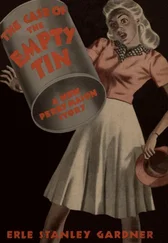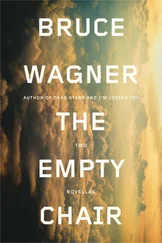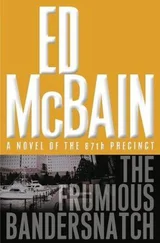The lift was a new one, and it pulled the chairs silently up the mountain. On his right, Hawes could see the skiers descending, a damn fool snowplowing out of control down a steep embankment pocked with moguls, an excellent skier navigating turns in parallel precision. The wind keened around and under his hood, the only sound on the mountain. The ride was a pleasant one, except for the wind and the cold. In some spots, the chair was suspended some thirty feet above the snow below. In other places, the chair came as close as six feet to the ground. He was beginning to anticipate the descent. He saw the unloading station ahead, saw the sign advising him to keep the tips of his skis up, and prepared to disembark. The skier ahead of him met with difficulty as he tried to get off his chair. The snow had been falling too heavily to clear, and there was no natural downgrade at the top of the lift; the chair followed its occupant, rather than rising overhead at the unloading point. The girl ahead of Hawes was almost knocked off her feet by her own chair. She managed to free herself as the chair gave a sharp lurch around the bend to begin its trip down the mountain again. Hawes concentrated on getting off the chair. Surprisingly, he did so with a minimum of effort and without poles, and then waited while the two empty chairs passed by. The third following chair approached the station. A man clambered off the chair, handed Hawes his poles with a “These yours?” and skied to the crest of the slope. Hawes stood just outside the station booth, hanging his poles over his wrists. He was certain that the fourth chair behind his had contained two skiers at the bottom of the lift, and yet it seemed to be approaching now with only a single person in it. Hawes squinted through the snow, puzzled. Something seemed odd about the person in the fourth chair, something was jutting into the air at a curious angle — a ski? a leg? a ... ?
The chair approached rapidly.
The skier made no move to disembark.
Hawes opened his eyes wide behind his yellow-tinted goggles as the chair swept past the station.
Through the driving snow, he had seen a skier slumped back into the passing chair, gloved hands dangling limply. And sticking out of the skier’s chest at a malicious angle over the heart, buffeted by the wind and snow so that it trembled as if it were alive, thrust deep through the parka and the clothing, beneath it like an oversized, slender aluminum sword, was a ski pole.
The chair gave its sharp lurch as it rounded the bend.
The skier slid from the seat as the chair made its abrupt turn. Skis touched snow, the body fell forward, there was a terrible snapping sound over the keening of the wind, and Hawes knew instantly that a leg had been broken as bone yielded to the unresisting laminated wood and the viselike binding. The skier fell face downward, the ski pole bending as the body struck the snow, one leg twisted at an impossible angle, the boot still held firmly in its binding.
For a moment, there was only confusion compounded.
The wind and the snow filled the air, the body lay, motionless, face down in the snow as the chair whipped around the turn and started its descent. An empty chair swept past, another, a third, and then a chair came into view with a man poised to disembark, and Hawes shouted to the booth attendant, “Stop the lift!”
“What?”
“Stop the goddamn lift!”
“What? What?”
Hawes moved toward the body lying in the snow just as the man on the chair decided to get off. They collided in a tangle of poles and skis, the relentless chair pushing them along like a bulldozer, sending them sprawling onto the body in the snow, before it snapped around for its downward passage. The booth attendant finally got the message. He ran into the small wooden shack and threw the control switch. The lift stopped. There was a deeper silence on the mountain.
“You okay?” he called.
“I’m fine,” Hawes said. He got to his feet and quickly unsnapped his bindings. The man who’d knocked him down was apologizing profusely, but Hawes wasn’t listening. There was a bright red stain spreading into the snow where the impaled skier had fallen. He turned the body over and saw the ashen face and sightless eyes, saw the blood-stained parka where the pole had been pushed through the soft and curving breast into the heart.
The dead skier was a young girl, no more than nineteen years old.
On the right sleeve of her black parka was the insignia of a Rawson Mountain ski instructor, the interlocking R and M in red as bright as the blood which seeped into the thirsty snow.
“What is it?” the booth attendant shouted. “Shall I get the ski patrol? Is it an accident?”
“It’s no accident,” Hawes said, but his voice was so low that no one heard him.
As befitted this farcical hotel in this comic-opera town, the police were a band of Keystone cops led by an inept sheriff who worked on the premise that a thing worth doing was a thing worth doing badly. Hawes stood by helplessly as he watched these cracker-barrel cops violate each and every rule of investigation, watched as they mishandled evidence, watched as they made it hopelessly impossible to gain any information at all from whatever slender clues were available.
The sheriff was a gangling oaf named Theodore Watt who, instead of putting Lift A out of commission instantly while his men tried to locate the victim’s chair, instead rode that very lift to the top of the mountain, followed by at least three dozen skiers, hotel officials, reporters, and local cretins who undoubtedly smeared any latent prints lingering on any of the chairs, and made the task of reconstructing the crime almost impossible. One girl, wearing bright lavender stretch pants and a white parka, climbed off the chair near the booth and was promptly informed there was blood all over the seat of her pants. The girl craned her neck to examine her shapely behind, touched the smear of blood, decided it was sticky and obscene, and almost fainted dead away. The chair, meantime, was happily whisking its way down the mountain again to the loading station where, presumably, another skier would again sit into a puddle of the dead girl’s blood.
The dead girl’s name, as it turned out, was Helga Nilson. She was nineteen years old and had learned to ski before she’d learned to walk, as the old Swedish saying goes. She had come to America when she was fifteen, had taught in the ski school at Stowe, Vermont, for two years before moving down to Mt. Snow in that same fair state, and then abandoning Vermont and moving to Raws on Mountain, further south. She had joined the Rawson ski school at the beginning of the season, and seemed to be well-liked by all the instructors and especially by many beginning skiers who, after one lesson with her, repeatedly asked for “Helga, the little Swedish girl.”
The little Swedish girl had had a ski pole driven into her heart with such force that it had almost exited through her back. The pole, bent out of shape when Helga fell from the chair, was the first piece of real evidence that the Keystone cops mishandled. Hawes saw one of the deputies kneel down beside the dead girl, grasp the pole with both hands, and attempt to pull it out of her body.
“Hey, what are you doing?” he shouted, and he shoved the man away from the body.
The man glanced up at him with a baleful upstate eye. “And just who in hell’re you?” he asked.
“My name’s Cotton Hawes,” Hawes said. “I’m a detective. From the city.” He unzipped the left hip pocket of his ski pants, pulled out his wallet, and flashed the tin. The deputy seemed singularly unimpressed.
“You’re a little bit aways from your jurisdiction, ain’t you?” he said.
Читать дальше












